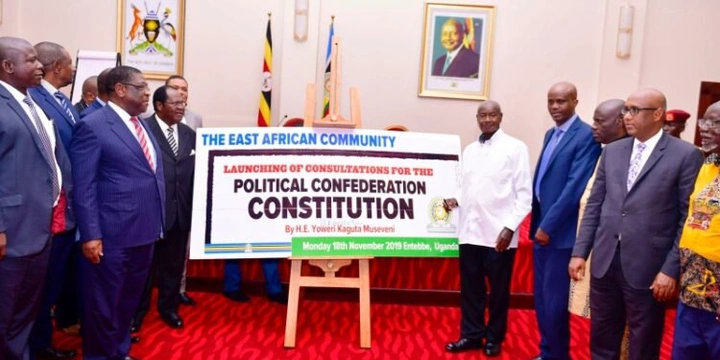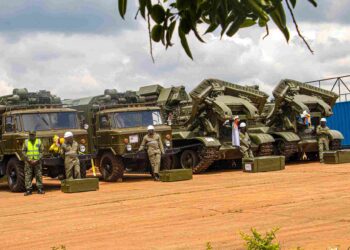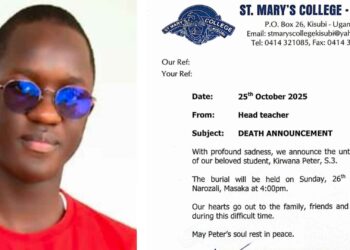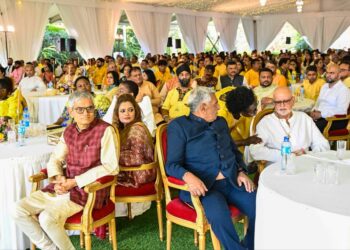President Yoweri Kaguta Museveni has made East African integration a top priority in Uganda’s development agenda for the next decade. His plan seeks to create a stronger and more united East African Community (EAC) with one currency, a shared constitution, and closer political cooperation by 2031.
This vision, outlined in the NRM 2026–2031 manifesto, emphasizes regional unity as the path to economic growth, stability, and independence. It positions Uganda as a key driver in transforming East Africa from a group of individual nations into a single, powerful federation.
At the center of Museveni’s plan is his belief in Pan-Africanism, a principle he has championed throughout his political life. He argues that Africa’s colonial history left the continent divided into small, weak states with limited markets and economic potential. “Africa’s 1.4 billion people are broken into small units. Small populations mean small markets. Small markets mean low prosperity,” Museveni said during a recent address to the EAC Secretariat.
Museveni believes that Uganda’s current production surpluses in sugar, maize, cassava, milk, and bananas are not a sign of overproduction, but of limited market access. He insists that integration will open regional markets and make African economies more self-reliant.
The African Continental Free Trade Area (AfCFTA), signed in 2017, forms part of this plan by removing trade barriers and creating access to broader markets across the continent. Museveni argues that with unified trade policies, Africa would no longer depend on access to European or American markets. “If we mobilize the whole of Africa to remove trade barriers, we shall no longer worry about being shut out of markets in Europe or the USA,” he said.
Infrastructure development is another pillar of the strategy. Projects such as the Mpondwe–Beni highway, built jointly with the Democratic Republic of Congo, are intended to improve trade and strengthen cross-border cooperation.
Museveni’s regional vision has also received support from other East African leaders. Kenya’s President William Ruto has called for a single currency to reduce trade costs, while Tanzania’s President Samia Suluhu Hassan has promoted Kiswahili as a tool for cultural and regional unity. Rwanda’s President Paul Kagame has also backed the idea of a political federation, noting that a united East Africa would have greater influence in global negotiations.
Beyond trade and economics, Museveni sees political unity as vital for strategic security. He believes that a single East African government would help the region protect its sovereignty in a changing global environment. “Market integration alone cannot solve strategic inferiority. Political integration is the shield that protects our sovereignty,” he stated.
The proposed East African Federation would bring together Uganda, Kenya, Tanzania, Rwanda, Burundi, South Sudan, and the DRC—forming a bloc of more than 340 million people with a combined GDP exceeding USD 1 trillion.
Museveni’s manifesto outlines five main goals to push this vision forward:
-
Support the creation of an EAC Political Federation with a shared constitution.
-
Establish a single regional currency to make trade easier and more stable.
-
Eliminate non-tariff barriers to allow goods and people to move freely.
-
Promote Kiswahili as a unifying language across the region.
-
Use AfCFTA opportunities to expand trade beyond East Africa.
Uganda’s trade with the EAC reached USD 2.84 billion in FY 2024/25, reflecting growing interdependence between member countries. The inclusion of South Sudan and the DRC in the community has further strengthened regional ties.
However, challenges remain. Political differences, slow policy implementation, and unequal economic growth across member states could delay progress. Museveni has cautioned against tribalism and religious divisions, calling them obstacles to unity. “Our enemies are those who push for sectarianism. They do not understand the value of integration,” he said.
Despite these hurdles, Museveni’s integration agenda continues to gain momentum. For him, it is not just a policy goal—it is a legacy project aimed at securing Africa’s future through unity, cooperation, and shared purpose.
As East Africa moves toward 2031, the dream of “One People, One Destiny” is becoming more than just an idea. With political will, regional solidarity, and citizen participation, the creation of a united East African Federation could soon become a reality.








